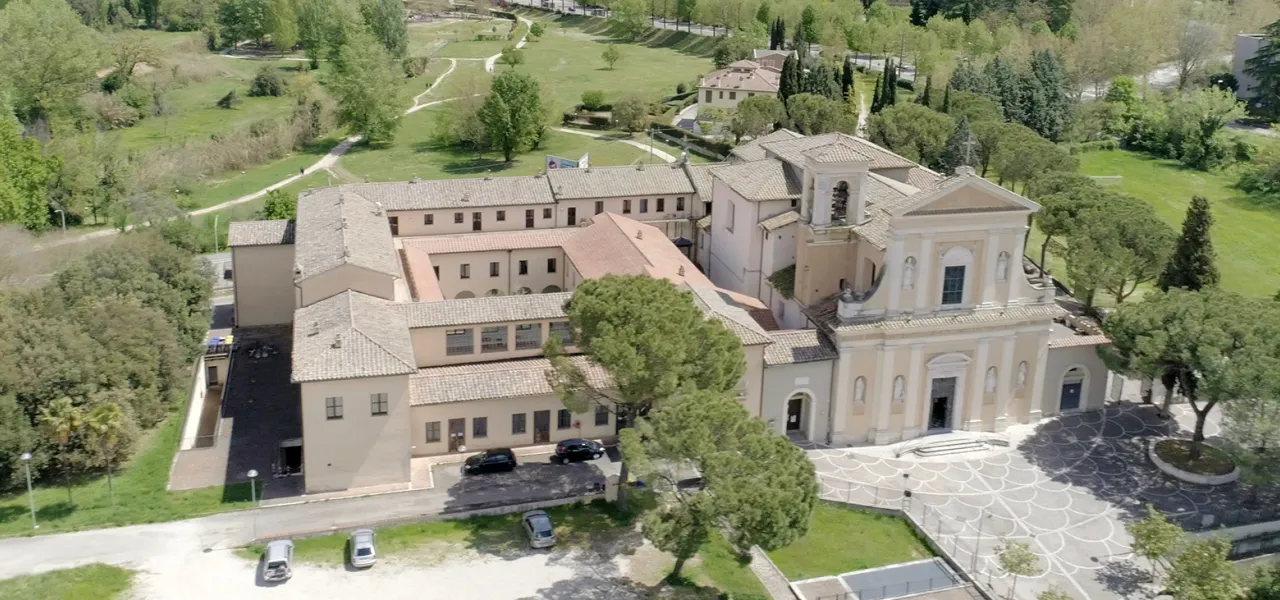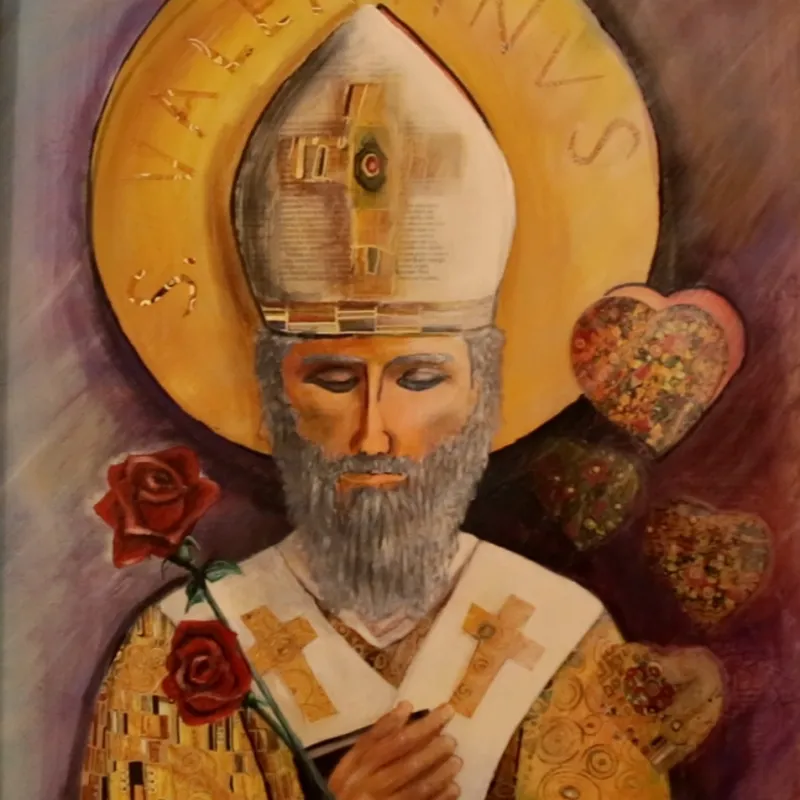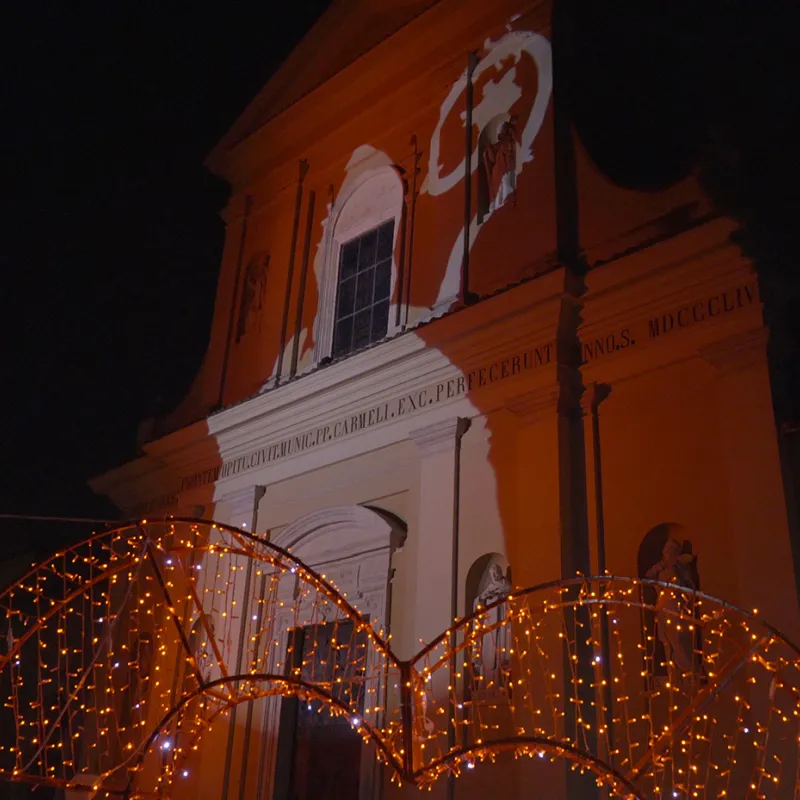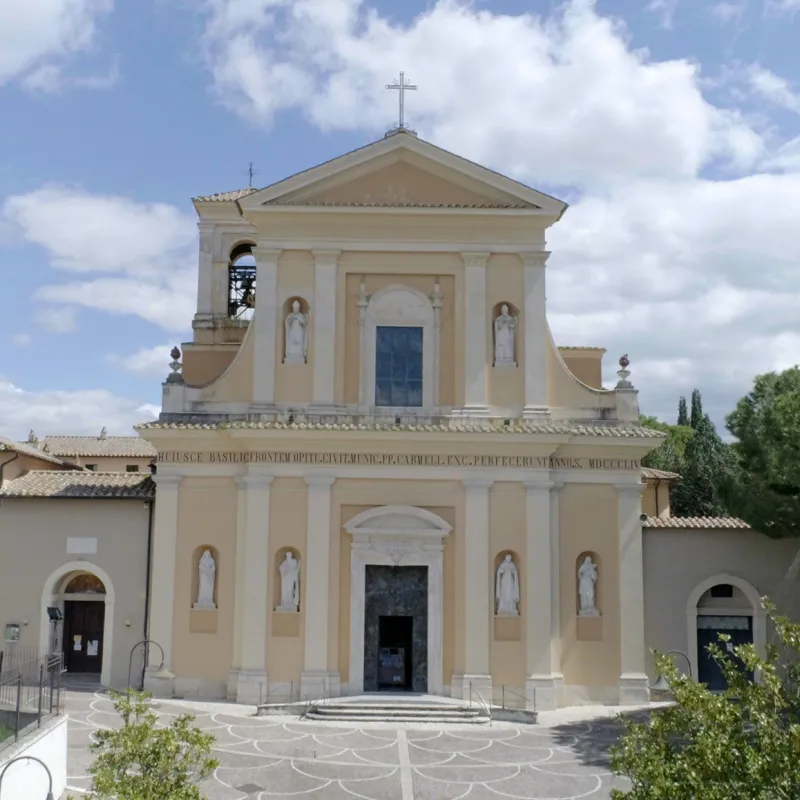Terni’s St. Valentine
Terni is the city of St. Valentine. Although he is celebrated in many parts of the world as the protector of lovers on 14 February, Terni has an extraordinary bond with St. Valentine, so much so that he is its patron saint.

And if the message of love, in the fullness of its meaning, which he left us has universal value, this city has embraced it and made it its own. Valentine was bishop of Terni, or rather of Interamna - the toponym in Roman times - in the 4th century. Recent studies have added new elements regarding the chronology of his life, which is not as claimed for a long time, in the 3rd century but in the following one. Consequently, the saint's martyrdom did not occur in 273 but probably in 347.
Valentine of Terni was martyred by decapitation performed secretly along the Via Flaminia, near Rome, after being arrested, "guilty" of having urged some young men to convert to Christianity, including the son of the philosopher Craton together with Proculus, Ephebus and Apollonius, his pupils. The prefect of Rome, whose son had recently converted, had Valentine arrested and executed. Proculus, Ephebus and Apollonius buried Valentine in a cemetery area just outside Terni, where the three young men who suffered the same martyrdom, were also buried.
In the 5th century, a first church was built on the burial site, later destroyed during the invasion of the Goths. This original construction (or perhaps a second one from the 6th century) was followed by a new, larger construction in the 13th century. In the early 17th century, excavations were conducted under the church to exhume the body of the Saint, which was found with the torso separated from the head, confirming his martyrdom by beheading. The remains of Saint Valentine are kept in an urn (17th century) under the main altar of the present Basilica, begun in 1606. On the 17th century façade there are stucco statues (with Saint Valentine and Saint Anastasius at the top) added in the 19th century. The single nave interior features many 17th century paintings, including those by Lucas De La Haye, a Carmelite monk: one of these is located in the chapel dedicated to Saint Teresa of Avila and depicts the "Madonna and Child between Saints Joseph and Teresa ". By the same artist are "St. Valentine invokes Our Lady’s protection over Terni" (central altarpiece) and "Adoration of the Shepherds" and "Adoration of the Magi".
The chapel of San Michele contains an altarpiece by the Roman painter Giuseppe Cesari known as Cavalier d’Arpino (17th century) depicting "San Michele defeating the devil". Andrea Polinori is the author of the canvas "Madonna and Child with Saints Laurence, John the Baptist and Bartholomew" from 1635. On the Confession Altar there is the painting "Martyrdom of St. Valentine" (17th century).
On the lower floor of the Basilica, in addition to the crypt, which belongs to the medieval building, you can visit the Museum where archaeological finds from excavations are on display.
The legend
Various versions have been told about the origins of the St. Valentine tradition, the patron saint of love celebrated all over the world. The most touching is that of two young lovers, Sabinus and Serapia,whose relationship was hindered by their parents because they belonged to different religions (Christian and Pagan). They turned to the Bishop for help and he married them.
When Serapia fell ill with tuberculosis, Sabinus called St. Valentine to her death-bed. Sabinus implored the Saint to help him, telling him that he could not live without his companion.
Accepting the young man’s despair, Valentine prayed to the Lord and the two lovers left earthly life to live together in eternity.
St. Valentine is worshipped also in Anglo-Saxon countries where the legend tells of the bishop giving flowers from his garden to young visitors.
Two of these young people fell in love and this love was consecrated with marriage blessed by the bishop himself. Their relationship was so happy that many couples followed suit so the Saint decided to dedicate a day of the year to a general wedding blessing.


Events
The Valentine events that take place throughout the month of February in Terni, the City of St. Valentine and the City of Love, are not only religious.
Terni becomes romantic and welcoming, involving retailers, hotels, cinemas, theatres, restaurants, bars and clubs and offers great shows, cultural gatherings and itineraries of art and knowledge.
Therefore, a programme full of events, festivities, ideas and tributes to love is born.
Among these, a prominent place is given to the St. Valentine Award, a gesture of love awarded to those who have stood out in the field of culture, science, sport and humanitarian organizations. It is also accompanied by a poetry and prose competition.
And much more, concerts, exhibitions, films, plays, shows and many other events to discover and enjoy.
THE STAGES OF THE ITINERARY

The Basilica of St Valentine is located about two kilometres from the centre of Terni, on the site of an ancient Christian cemetery, representing one of the most important examples of an early Christian necropolis in Umbria.